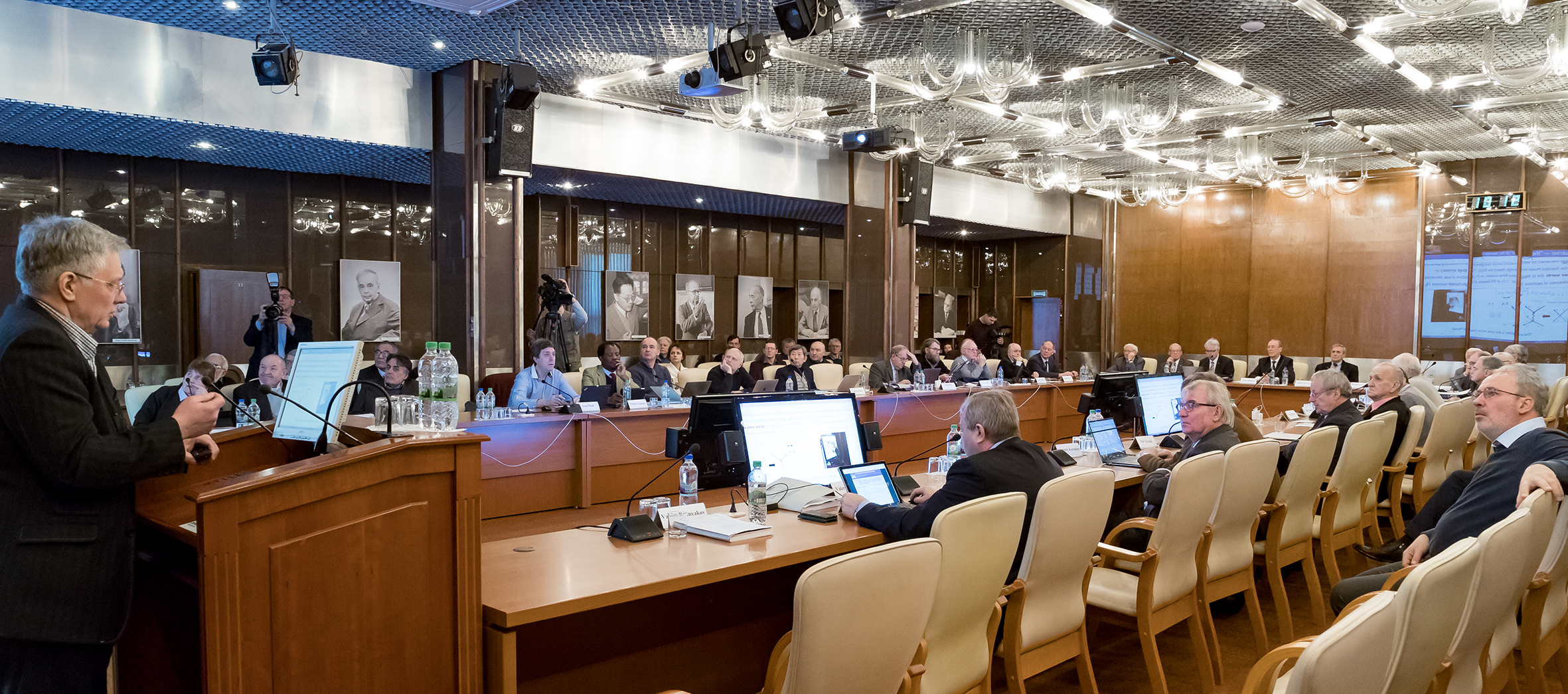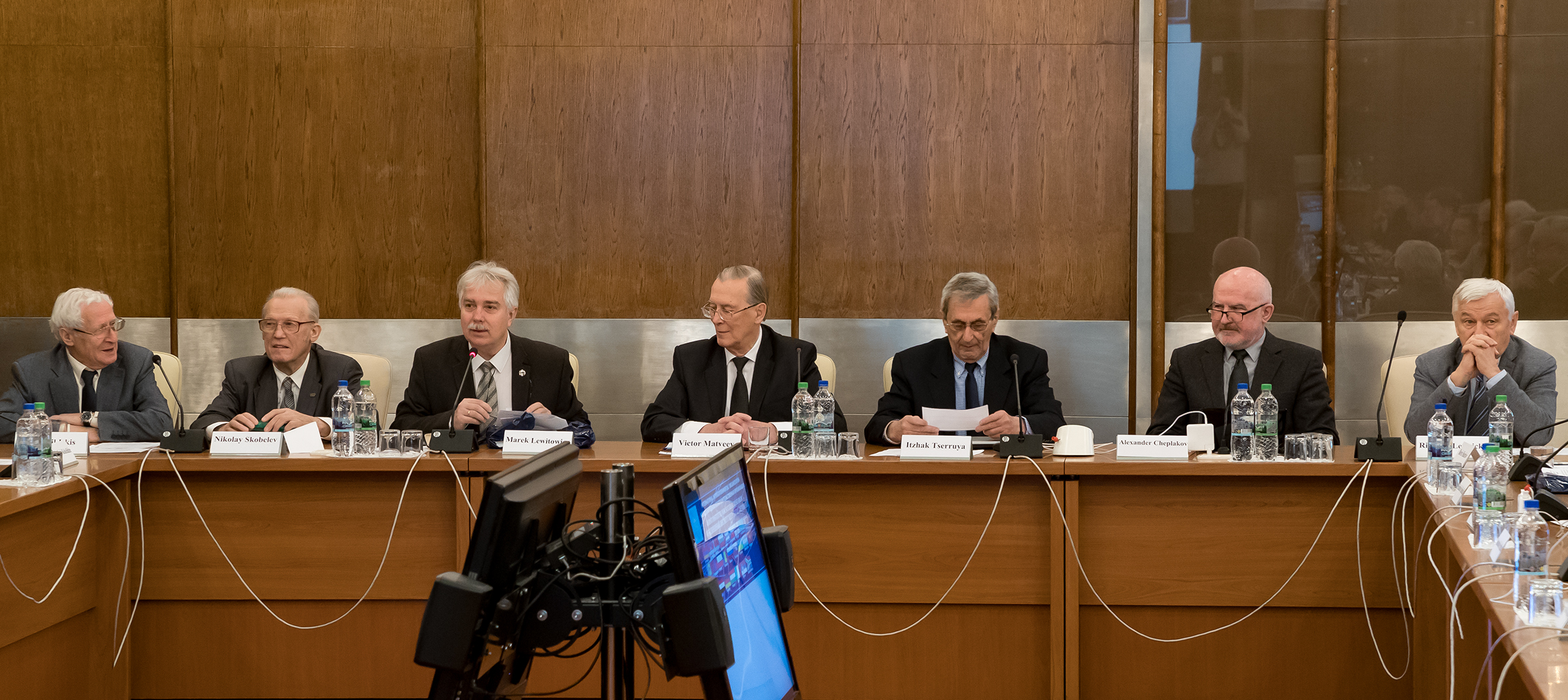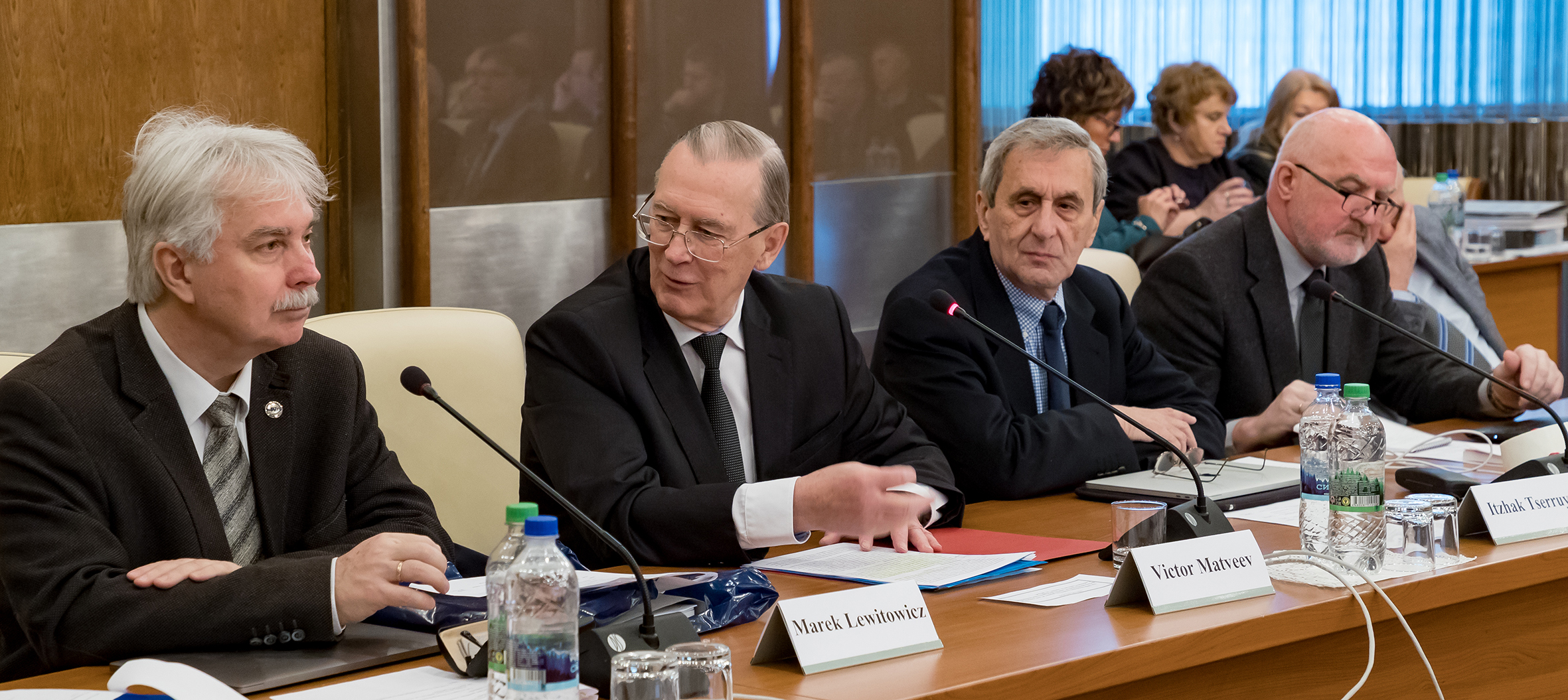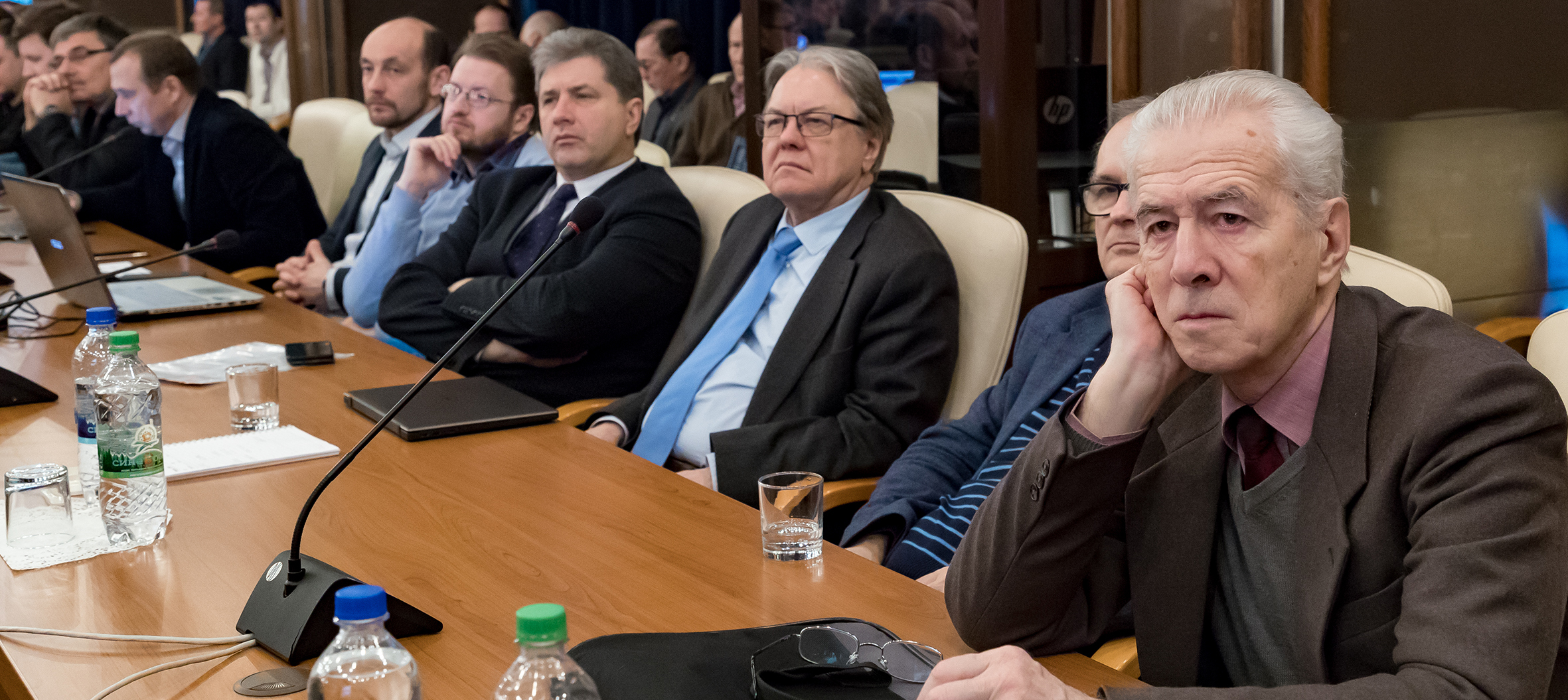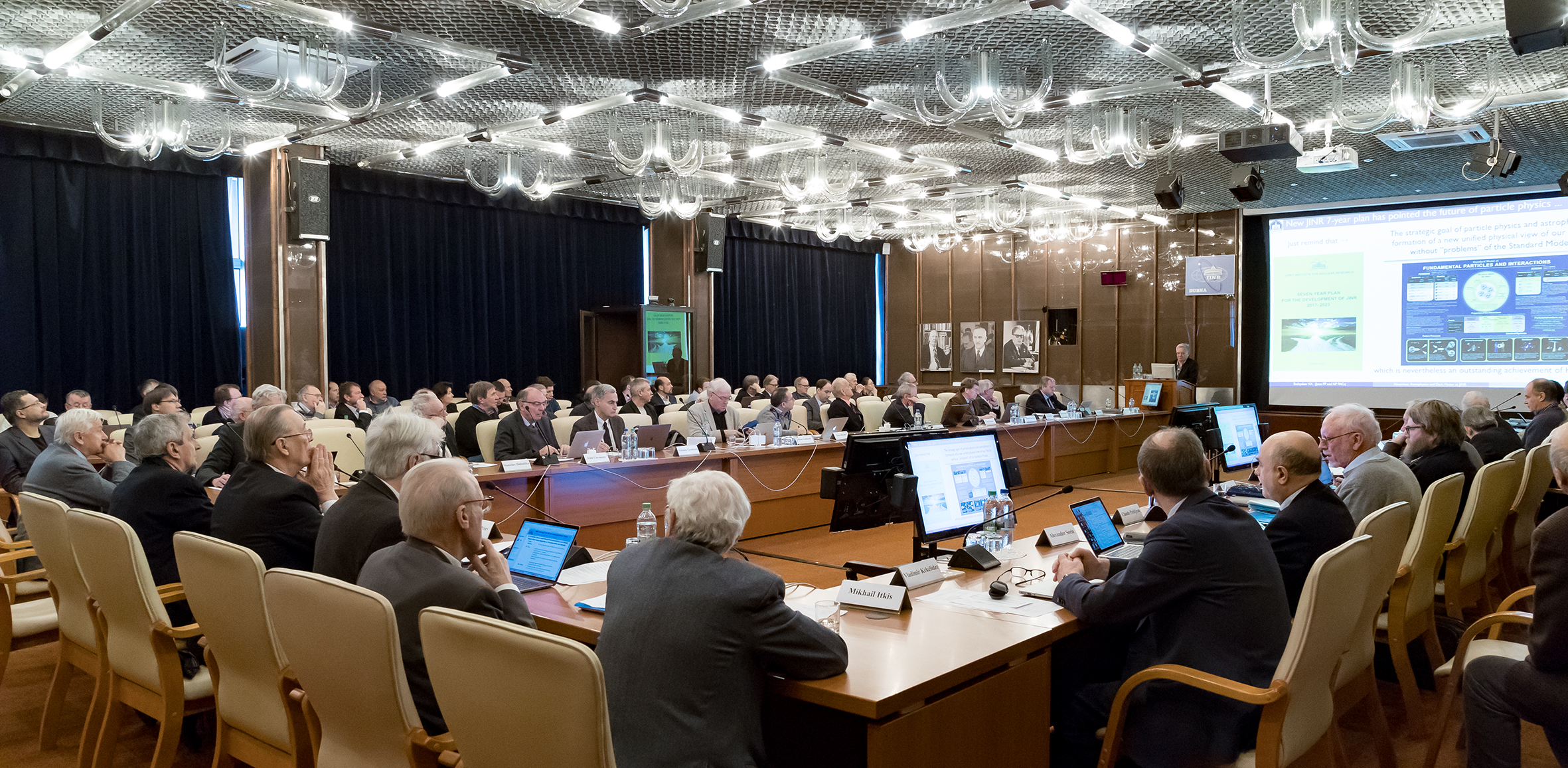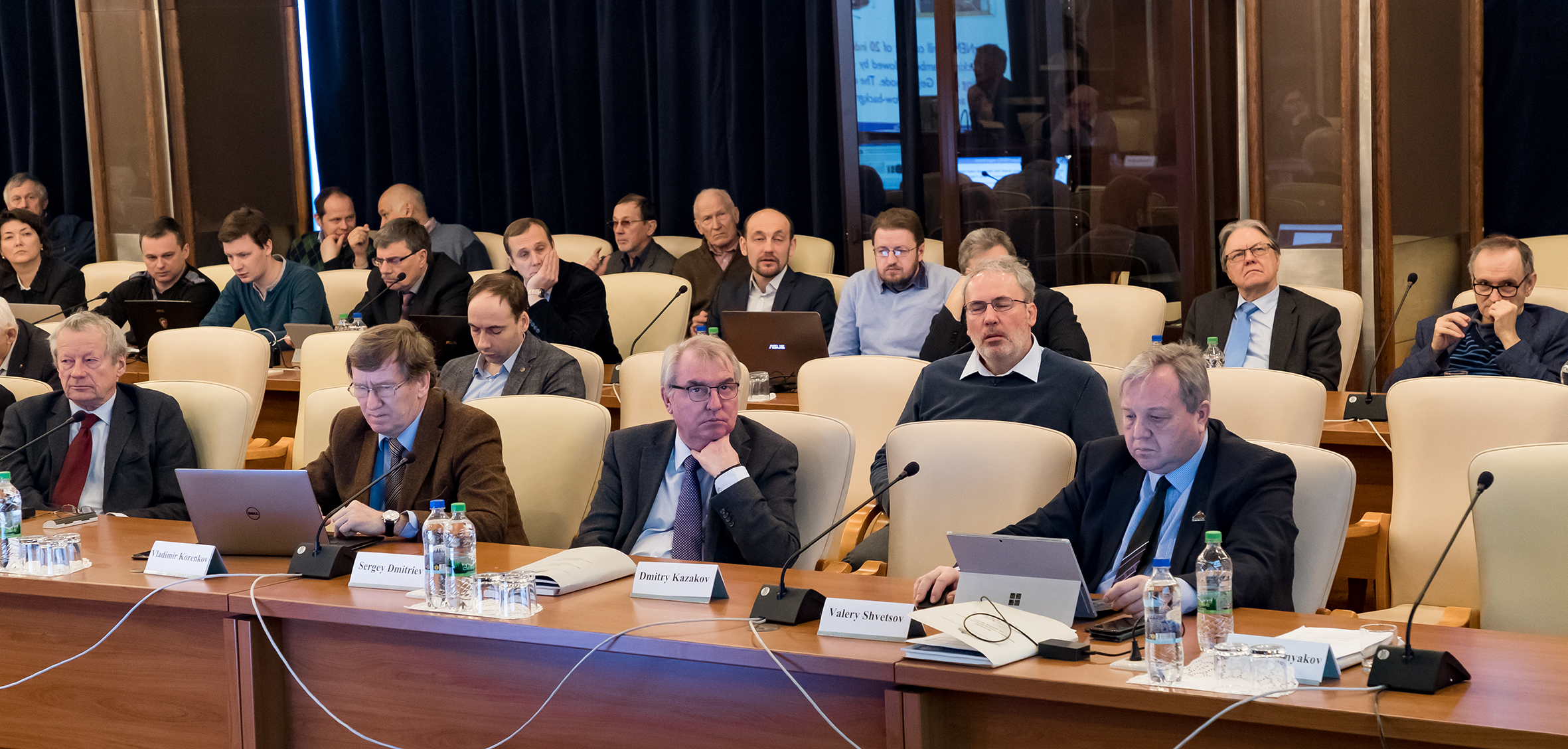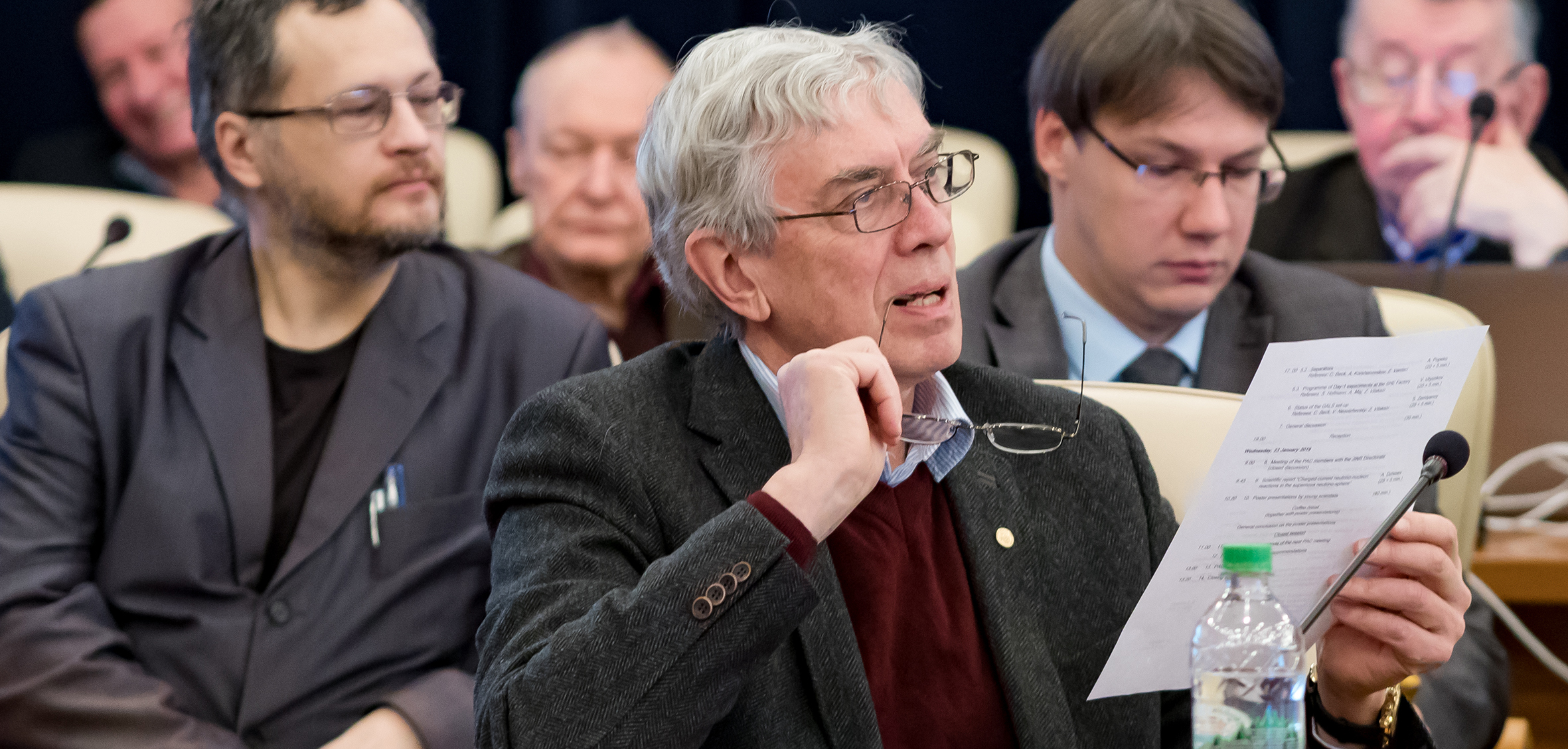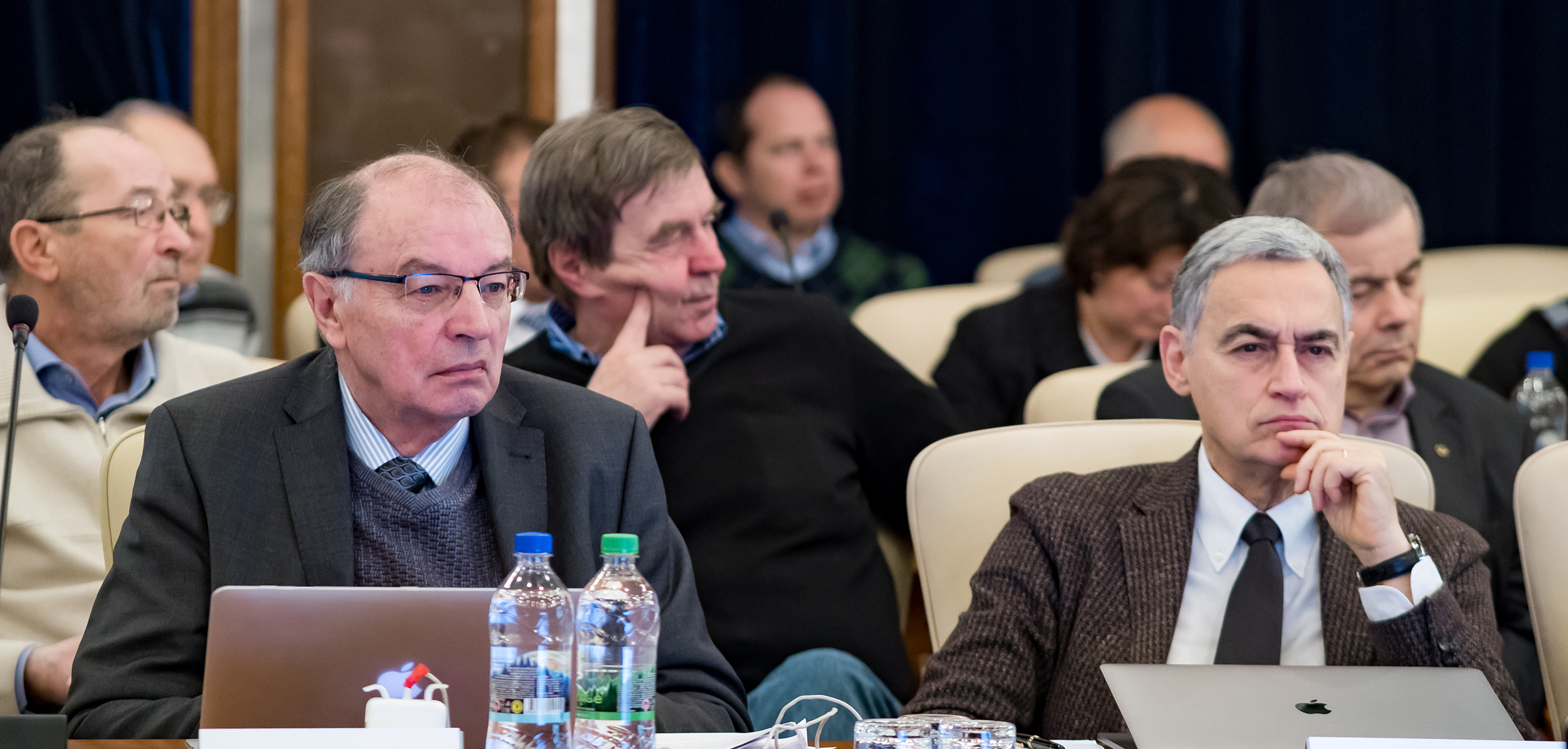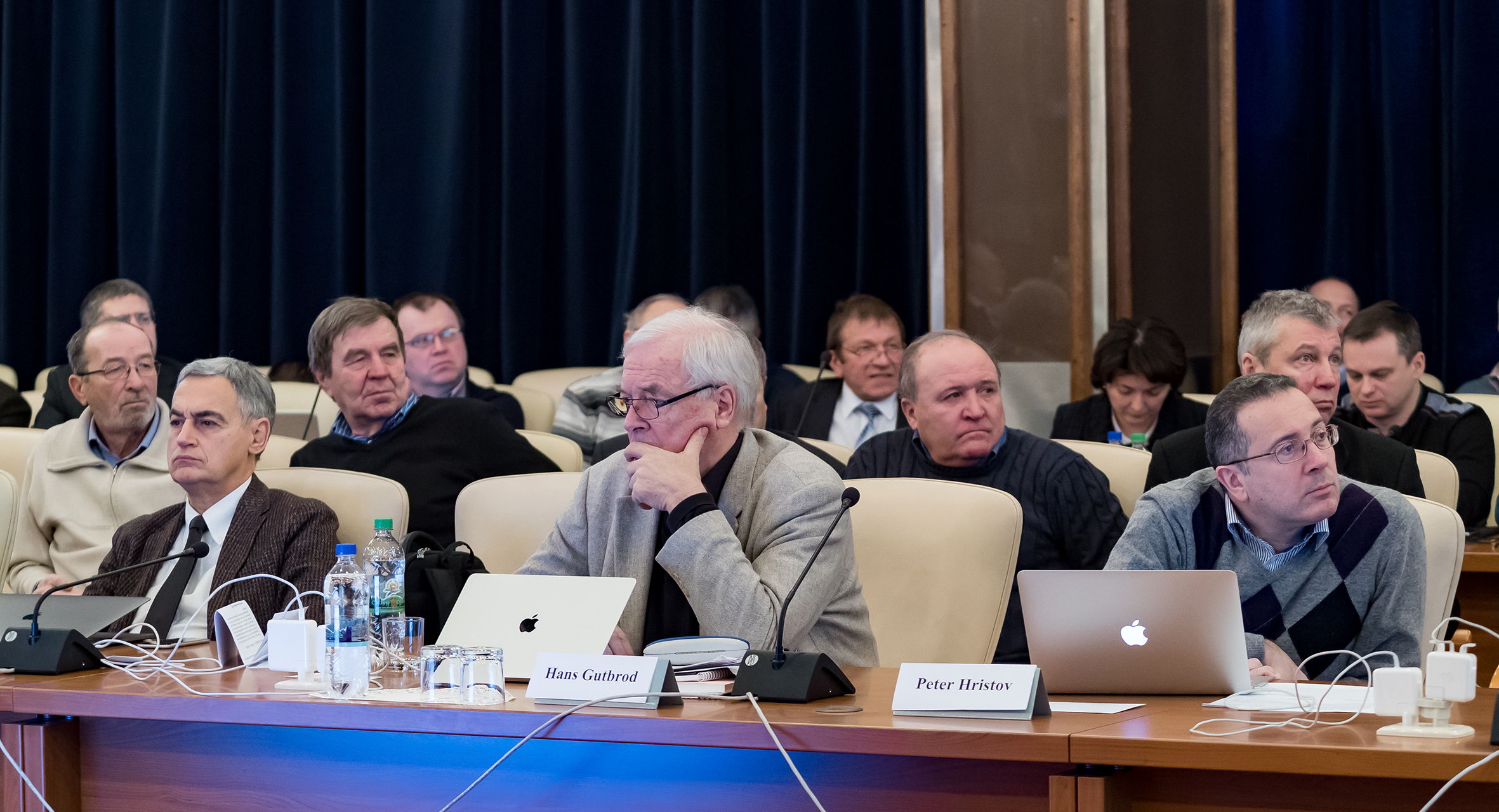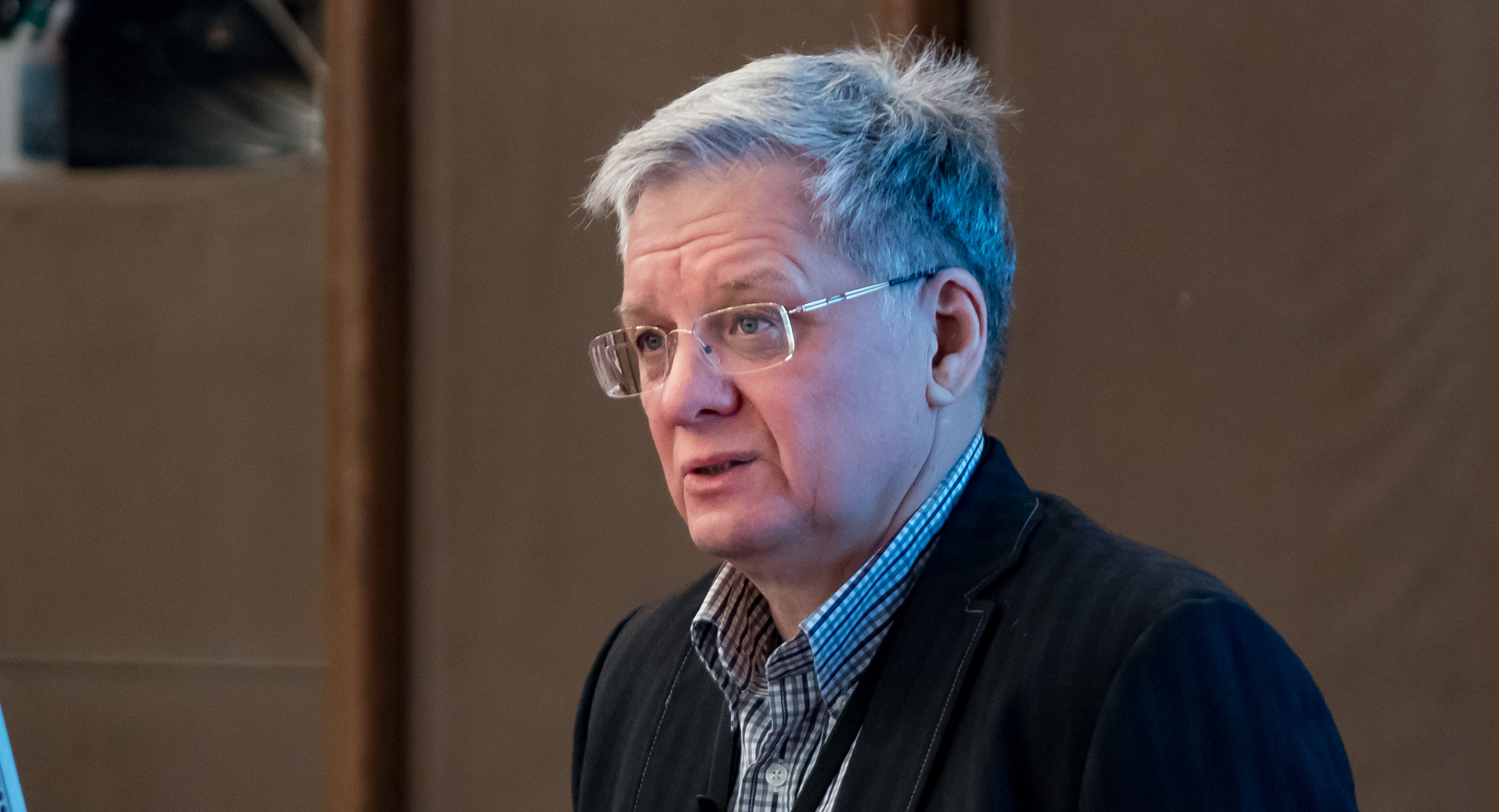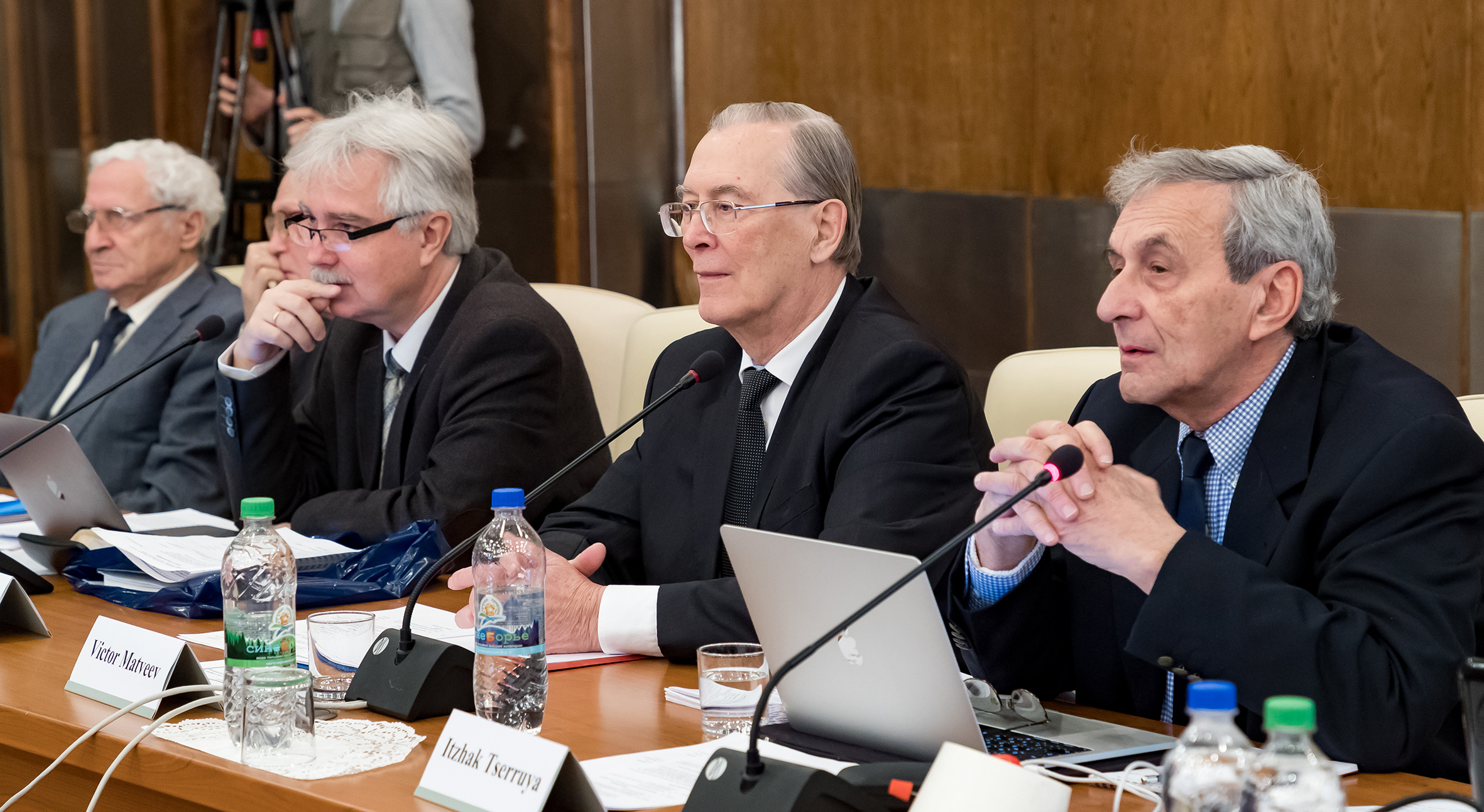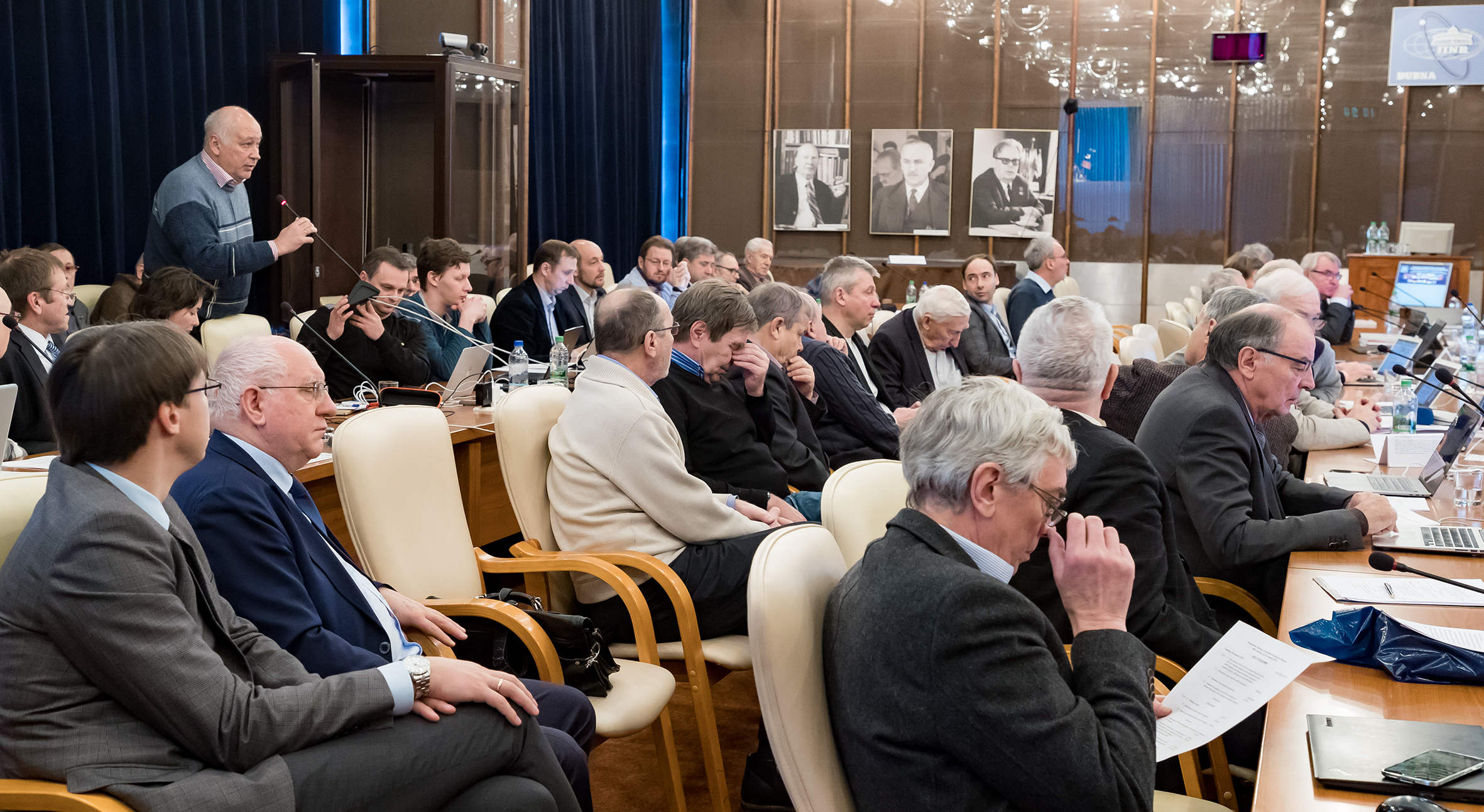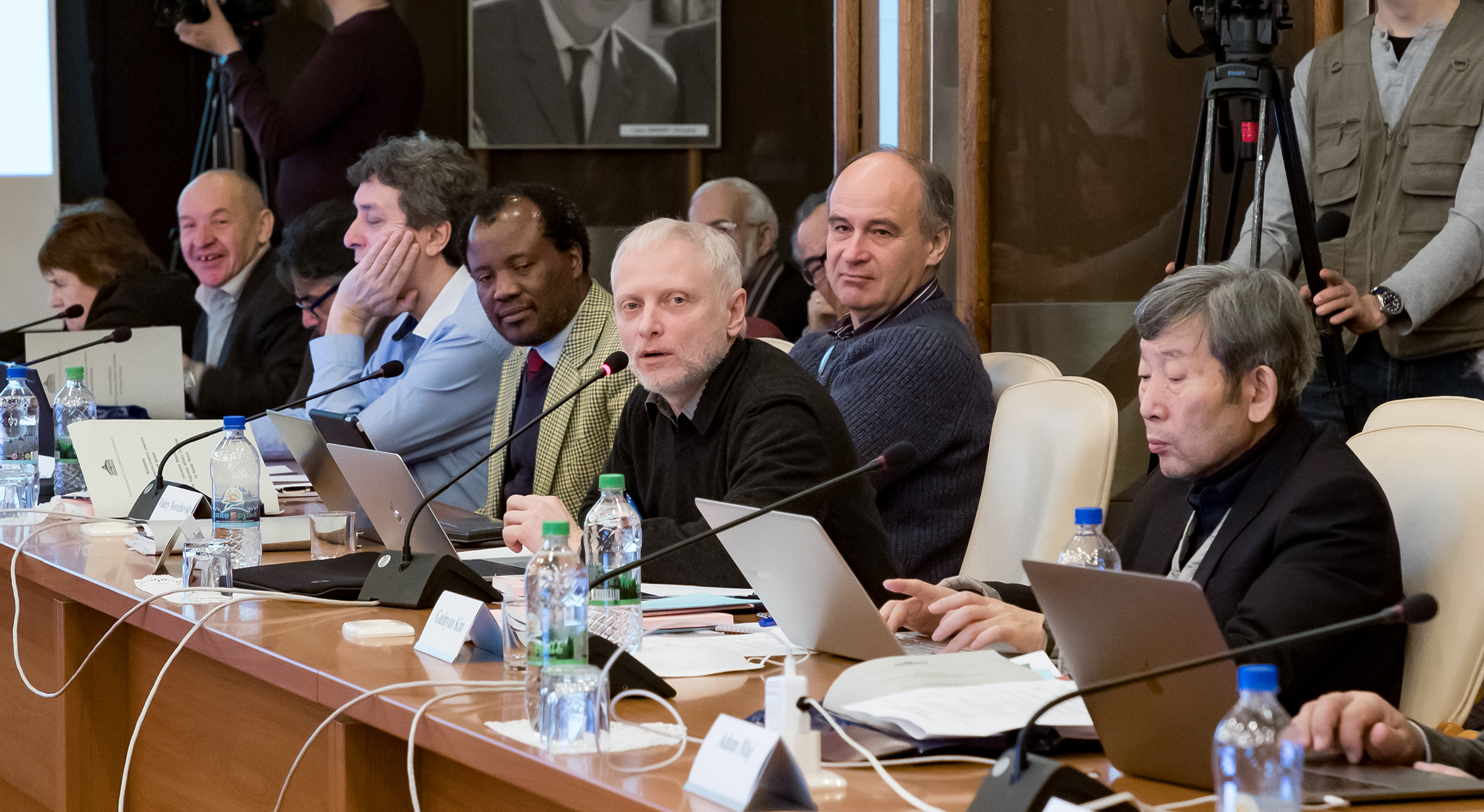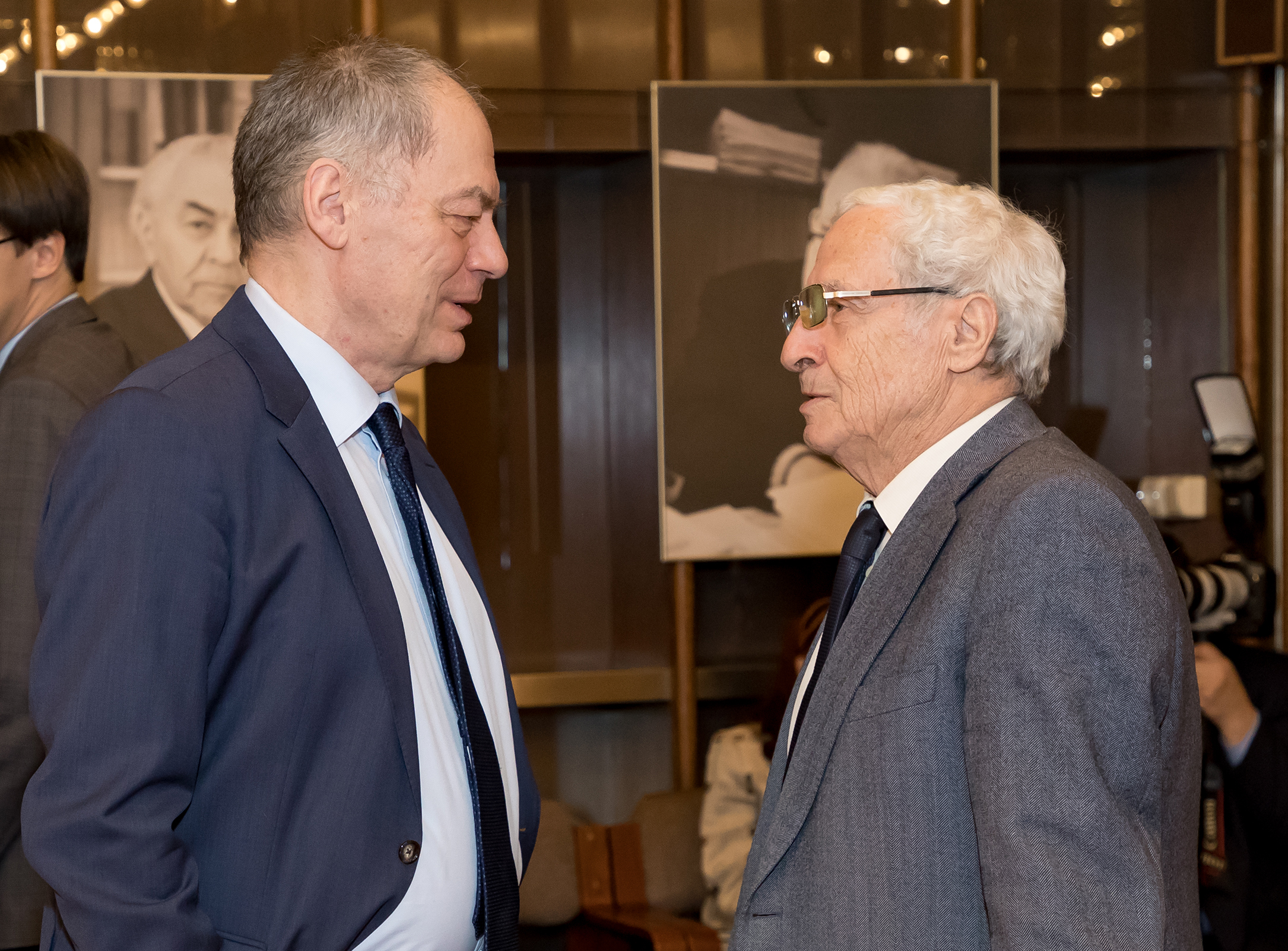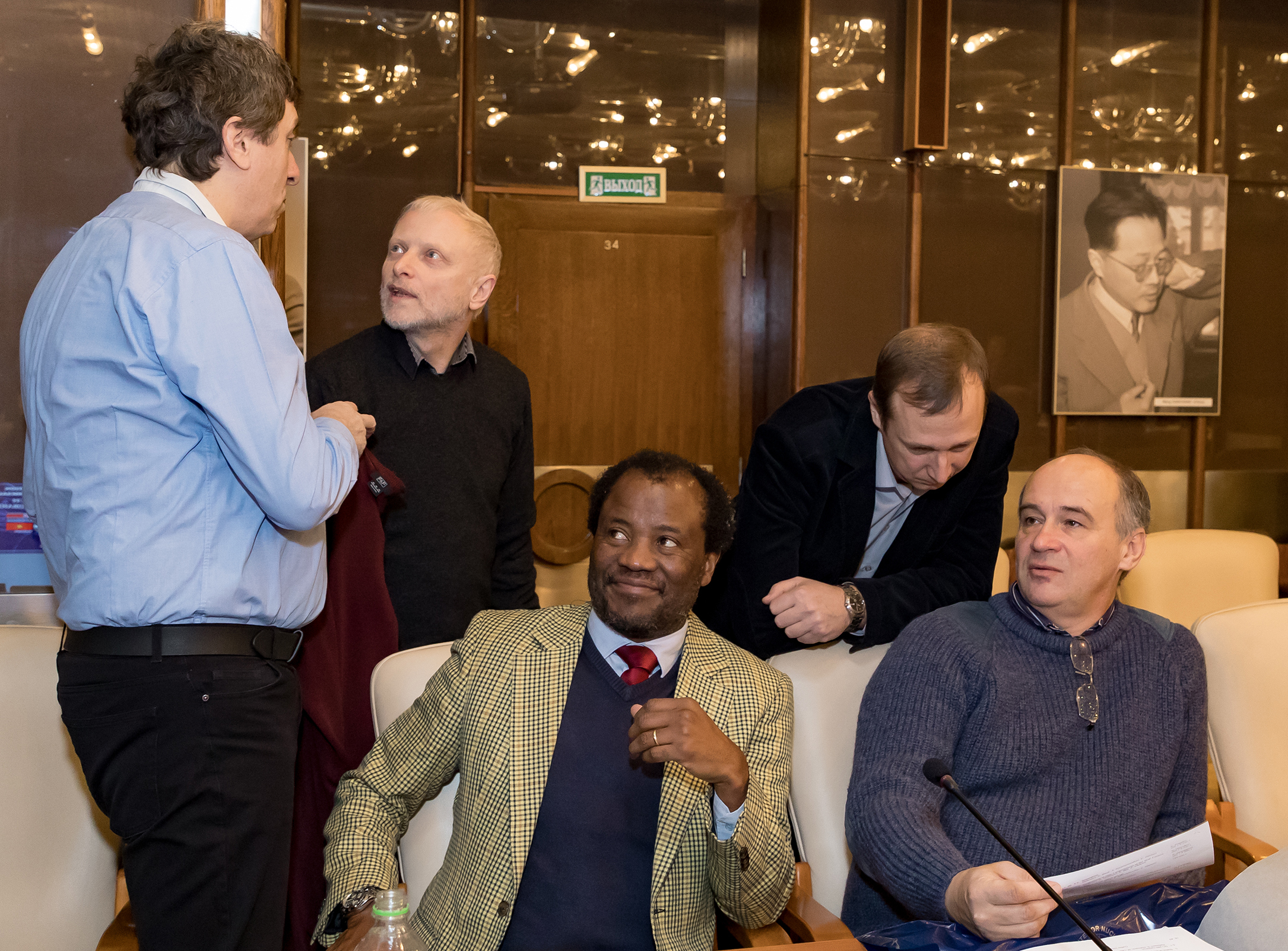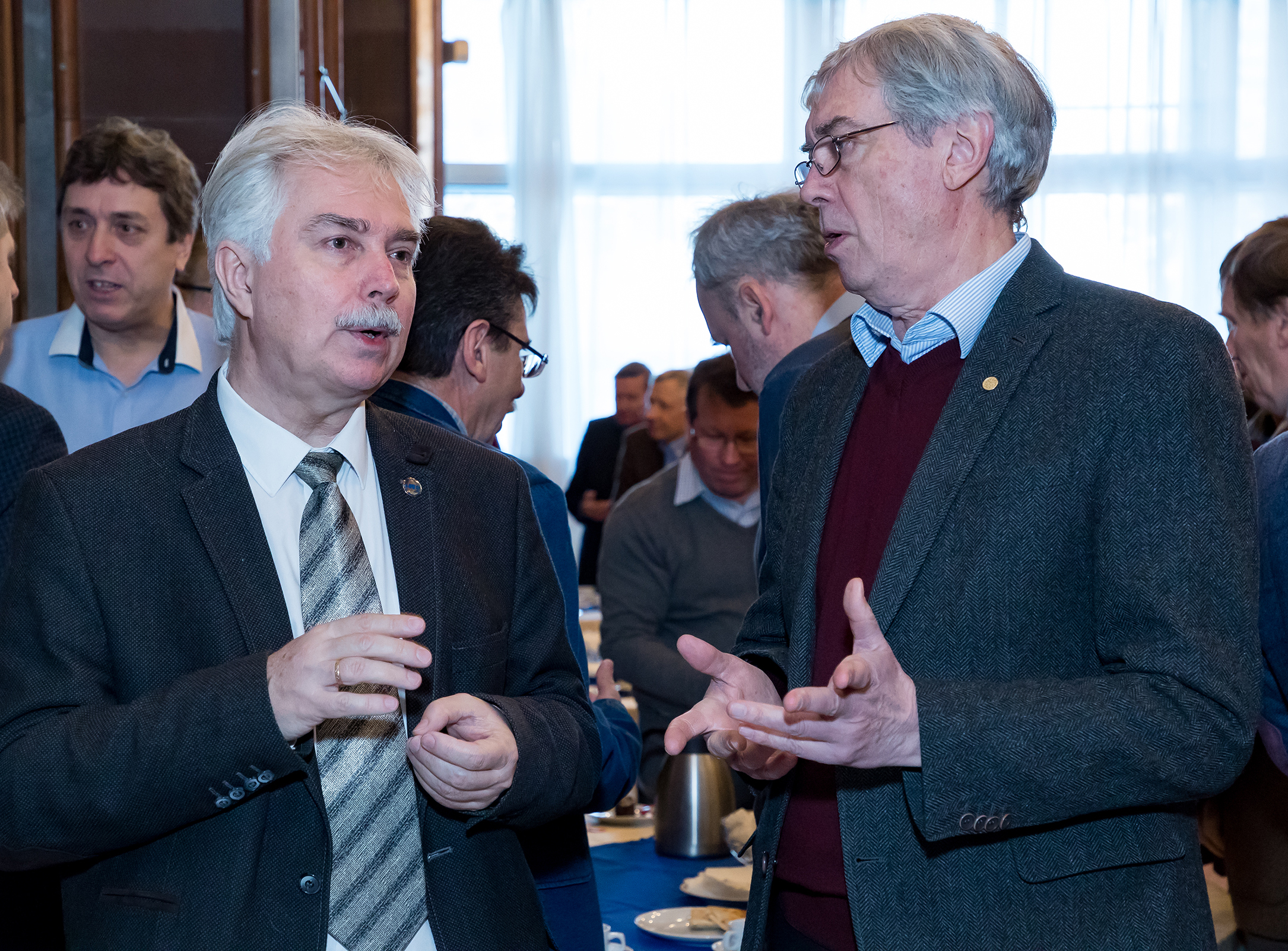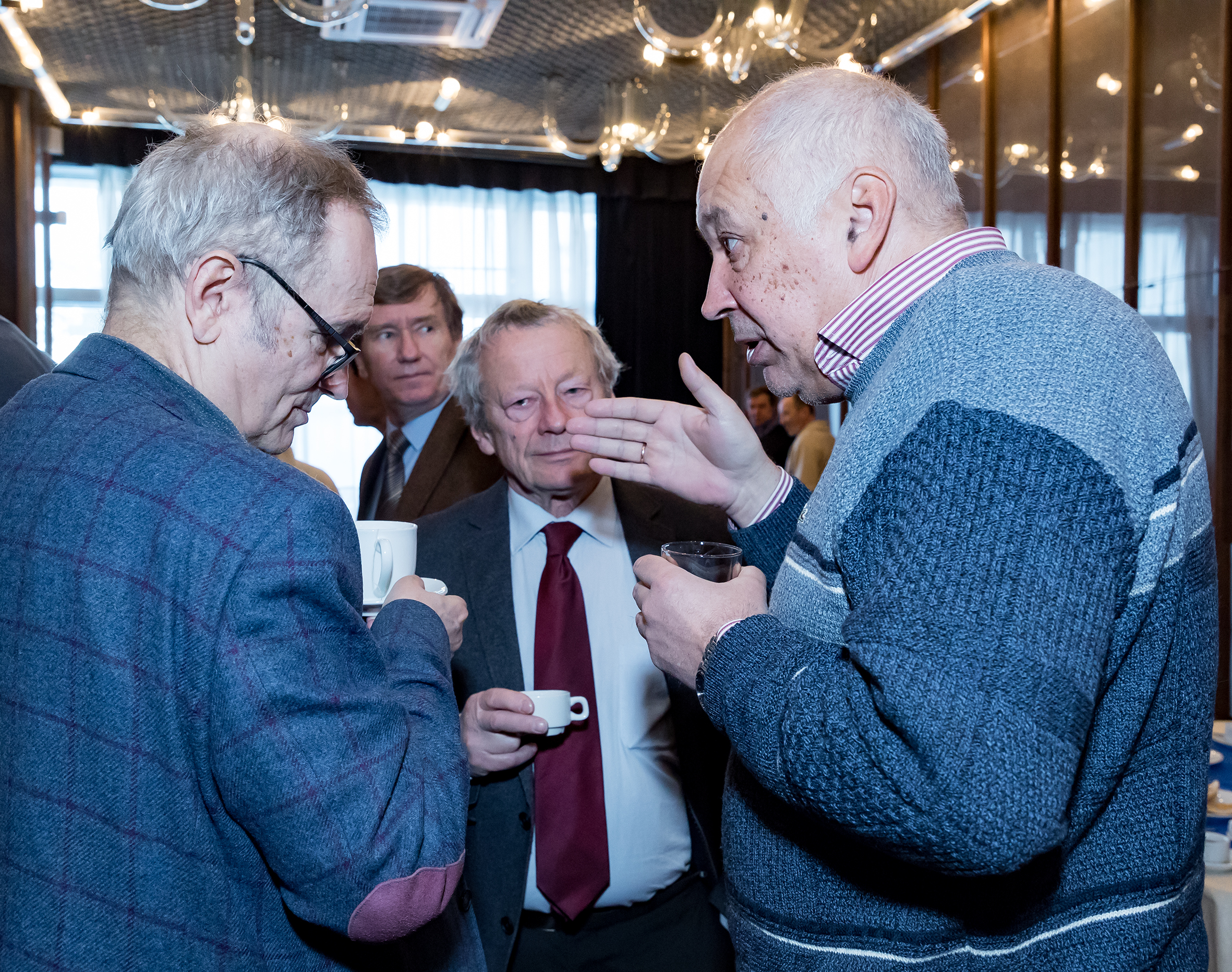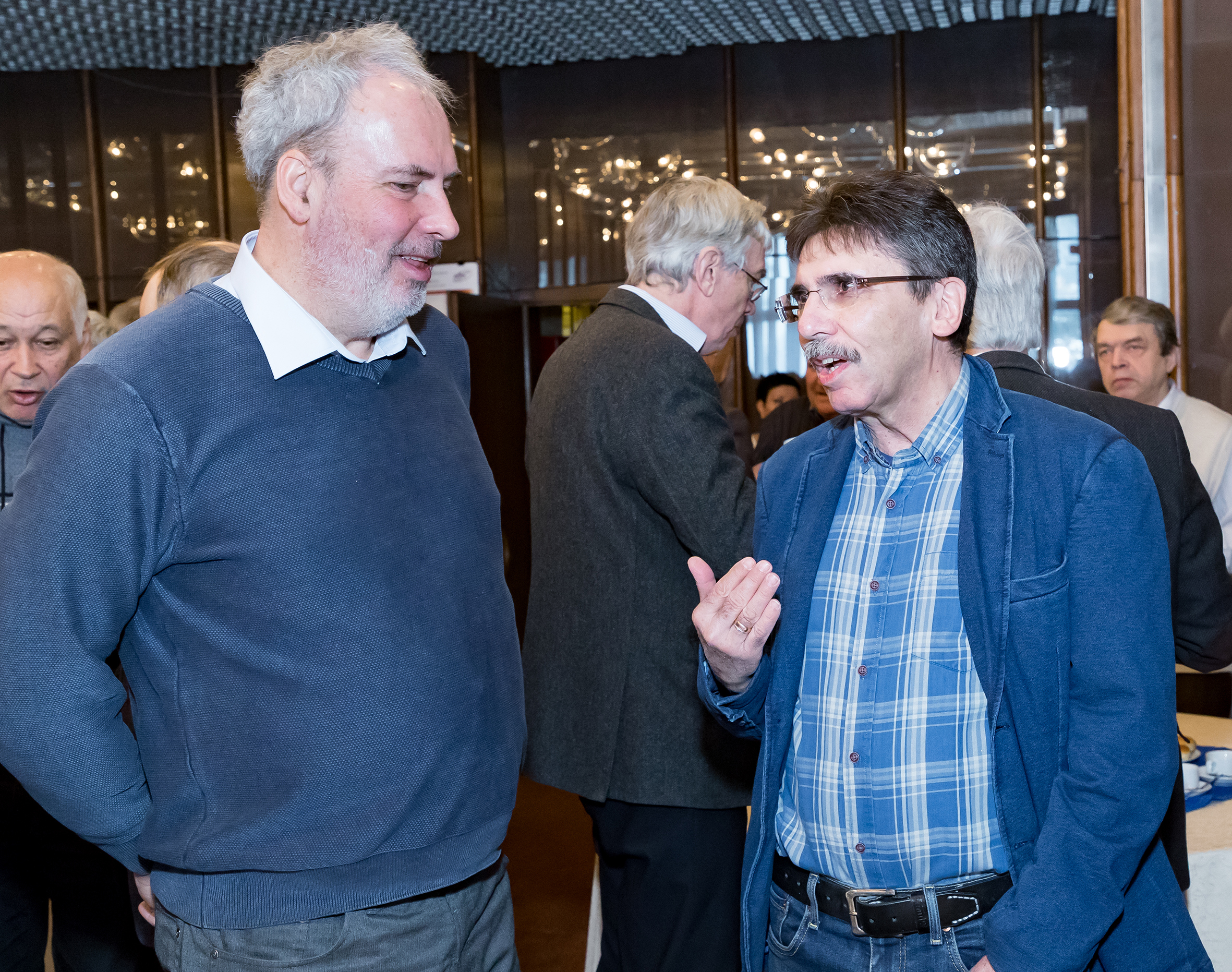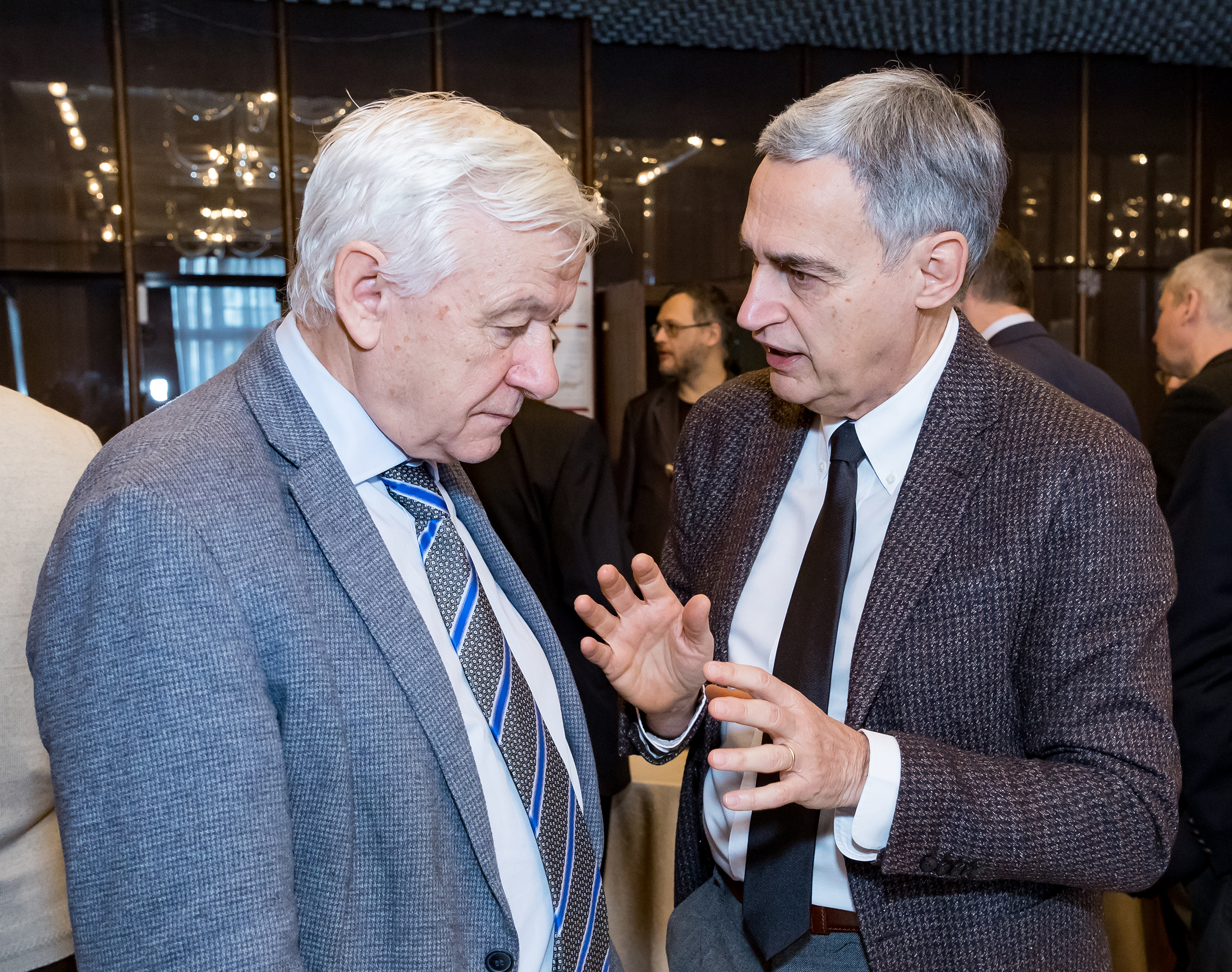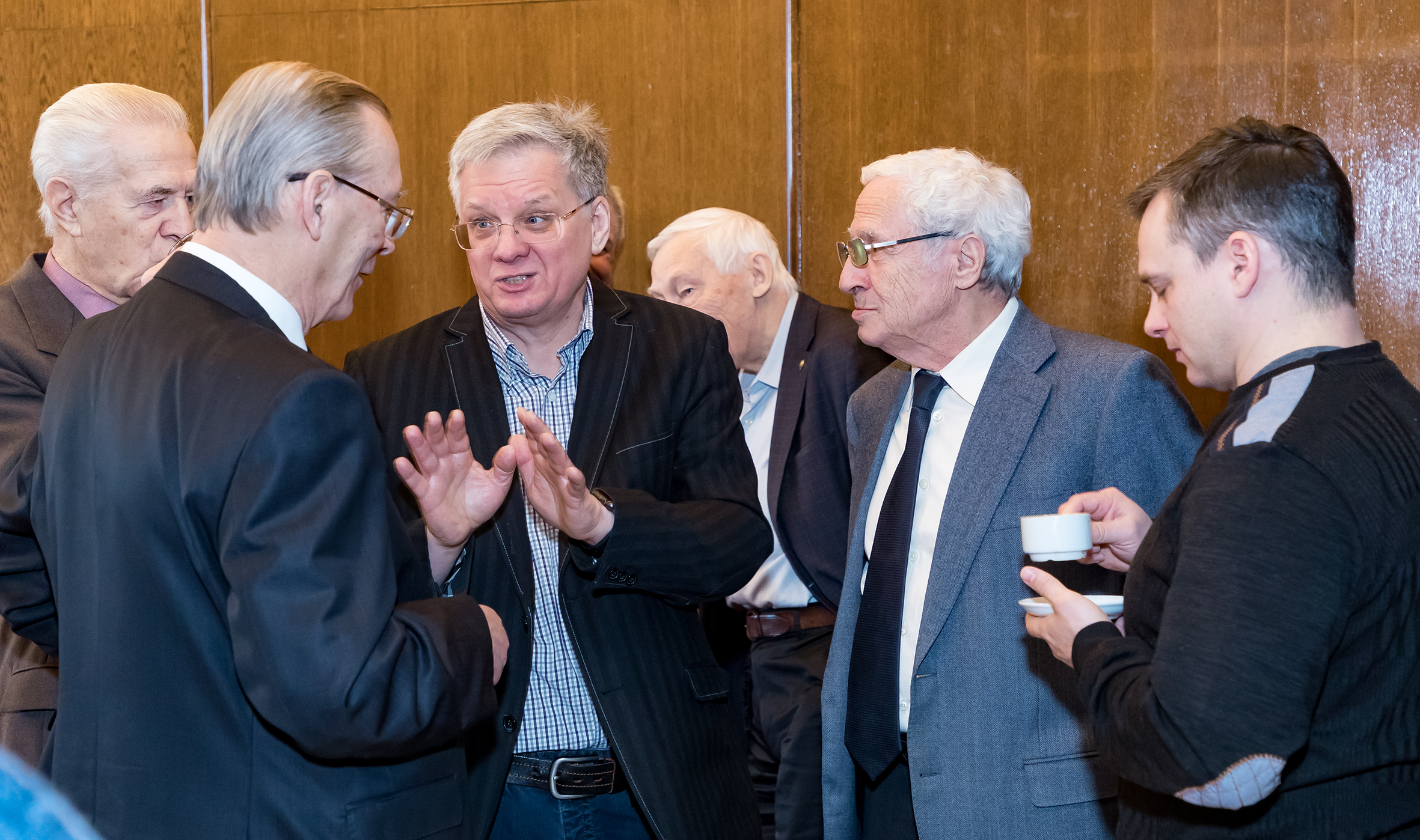At one of the important directions
Organization, 01 February 2019
The aim of holding a joint meeting of PAC for Nuclear Physics and PAC for Particle Physics, which was opened by JINR Director V.A. Matveev, was to evaluate projects and themes carried out in the Institute in the fields of neutrino physics, astrophysics and dark matter.
Director of the Dzhelepov Laboratory of Nuclear Problems Vadim Bednyakov commented on to JINR journalists the major statements of his report made at the joint meeting:
– The Baikal neutrino observatory is the most important project. Considerable progress was achieved in it: just in several years, we managed to construct one-third of the detector, and this year, we are planning to transport and assemble two more clusters. It is an unprecedented result, and we want to believe that everything will go on successfully. The Directorate helps us, there are resources, relevant financing, everything possible is made for the further improvement of the project. Now, we have moved to the stage of mass production of optical modules, and thanks to it, we face new problems but we have found ways to solve them.
The second project is the multi-purpose international experiment JUNO in China. We want and we will be the second in terms of participation in this project after our Chinese colleagues, our contribution is enormous, a perfect team works there consisting of young scientists, real enthusiasts, and I think that the success is guaranteed.
The third direction is especially important for us because it deals with research at the Kalinin Nuclear Power Plant where another great team works headed by Victor Brudanin, Vyacheslav Egorov and Eugeny Yakushev. We expect a breakthrough in the fields of detecting coherent scattering at nuclei. I consider this direction as very important and interesting: last year, good results were obtained and the groundwork was laid for us to achieve what we are aiming at.
As for the NOvA project, it is, if I am not mistaken, the initiative of the then DLNP Director Aleksander Olshevsky. JINR joined the NOvA project at the stage when the facility had been already created; good young specialists were engaged, they started to process the data, set new tasks… We consider our participation in the NOvA project as an important step to a new, more advanced neutrino experiment DUNE in Fermilab. It is a large and multi-functional neutrino observatory with a set of detectors.
It turned out that our participation in the NOvA project became some kind of a driver of the introduction of the most advanced computer “culture” from high-energy physics into neutrino research that allows us to model processing and get new data at the state-of-the-art level, and this is the most significant benefit of our participation in the NOvA project.
A distinctive feature of the “Taiga” project is that this is a hybrid facility aimed at registration of cosmic gamma radiation streams and cosmic rays. It is placed in the same point of the Earth’s surface as the Baikal facility is. And this does look attractive as far as modern models of space photon and neutrino production show that high-energy photons and neutrino have almost “identical origins” – from pion decays: neutrino – from charged ones, photons – from neutral ones. And if the expected balance is observed, then we will understand how space rays emerge, how they are accelerated and where they come from. Our team is engaged in the development of the Cherenkov telescope.
There is one more task – detecting dark matter. It is very complicated as far as, generally speaking, it is impossible to prove that the signals of “dark matter” we expect to see, at the LHC detectors, for example, will prove the existence of dark matter. This is a complex task. In fact, “Baikal”, JUNO and other larger neutrino detectors will try to register signals of so-called indirect detecting of dark matter when dark matter particles are accumulated in large space objects, such as the Sun or the galactic centre, then annihilate and produce neutrino and other penetrating particles that are registered. In particular, there is some research of the “Baikal” collaboration that limits the streams of dark matter particles from the Sun. So, it is not accidentally that the issues of indirect detecting of dark matter are included in the JINR neutrino programme in addition to the task of direct detecting of dark matter in the EDELWEISS and DarkSide experiments.
Materials prepared by Eugeny Molchanov, JINR Weekly Newspaper
Photos by Elena Puzynina, JINR Scientific Information Department

